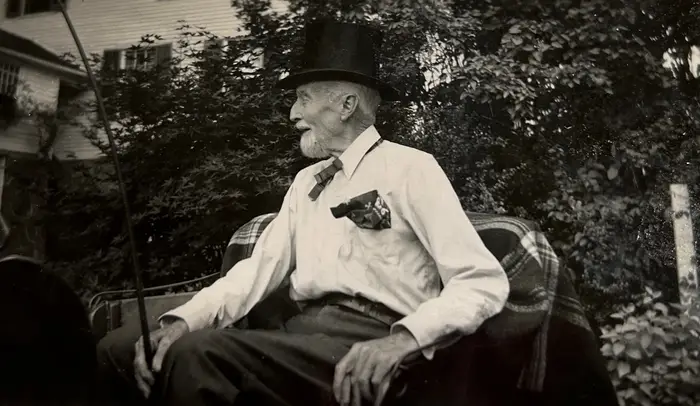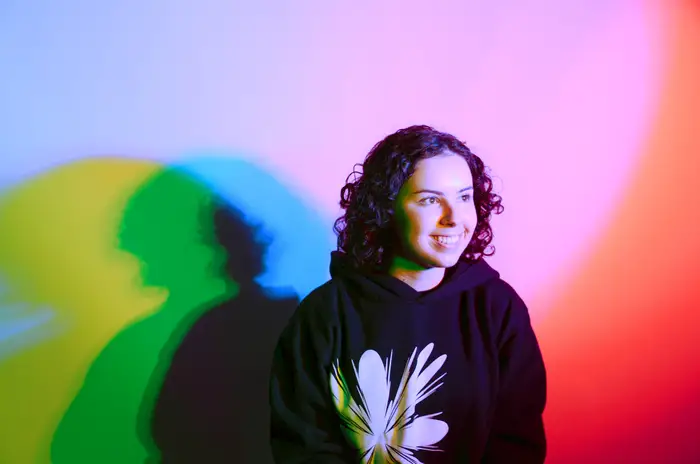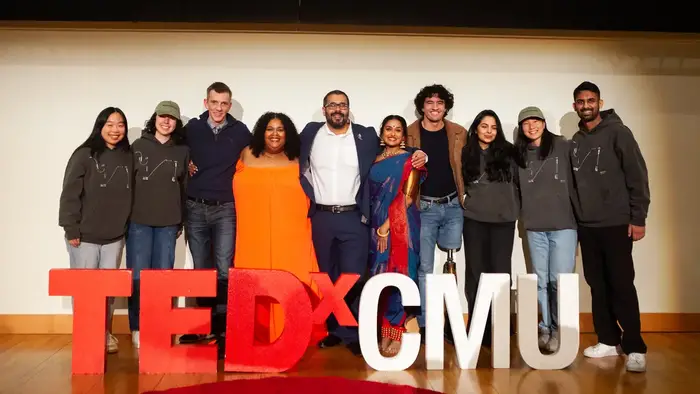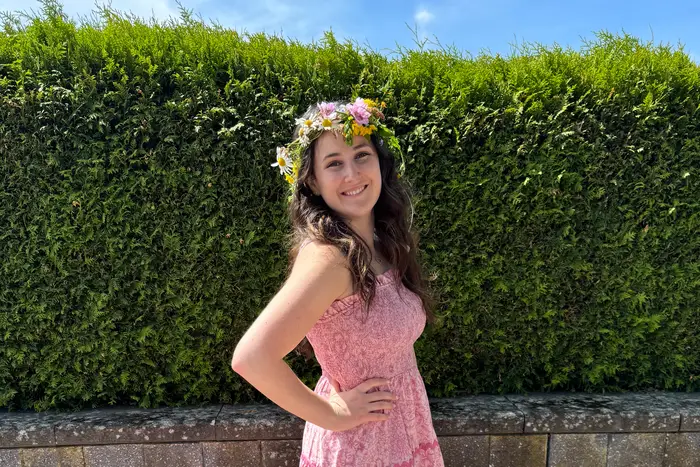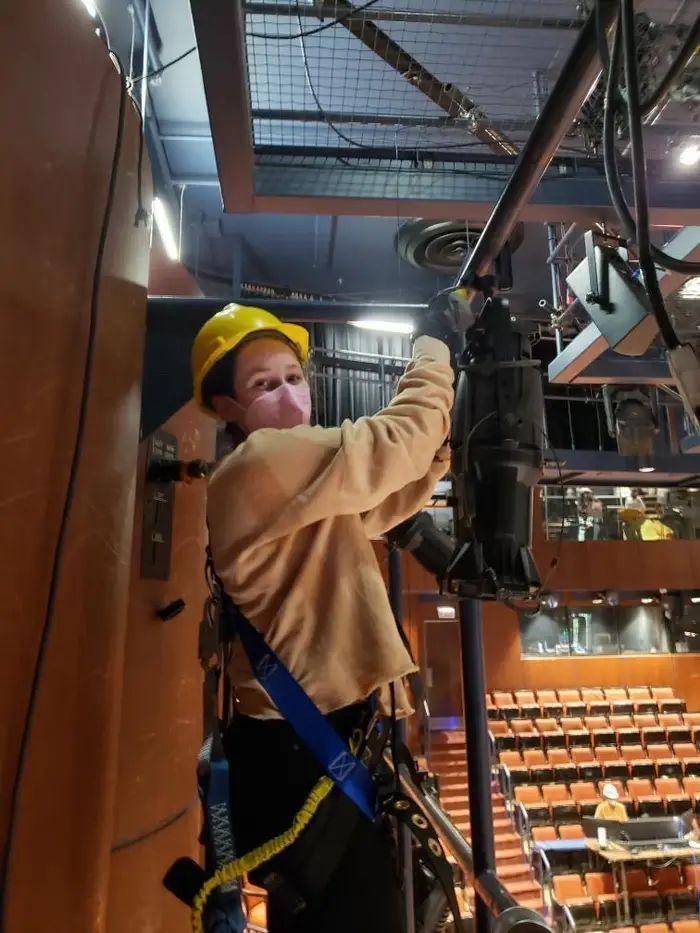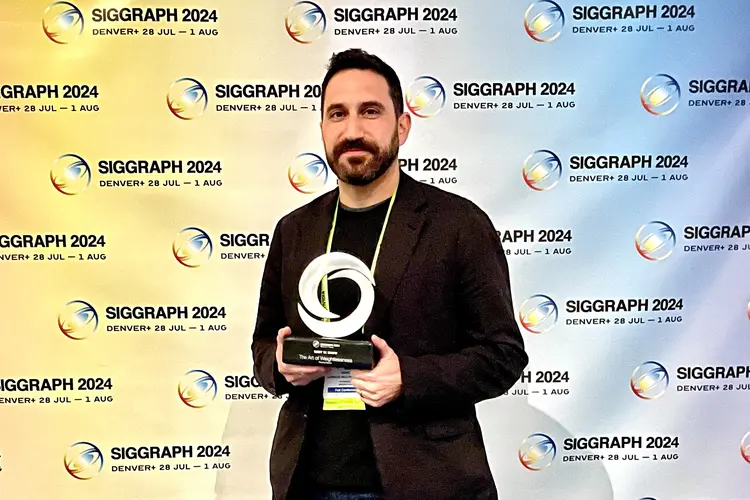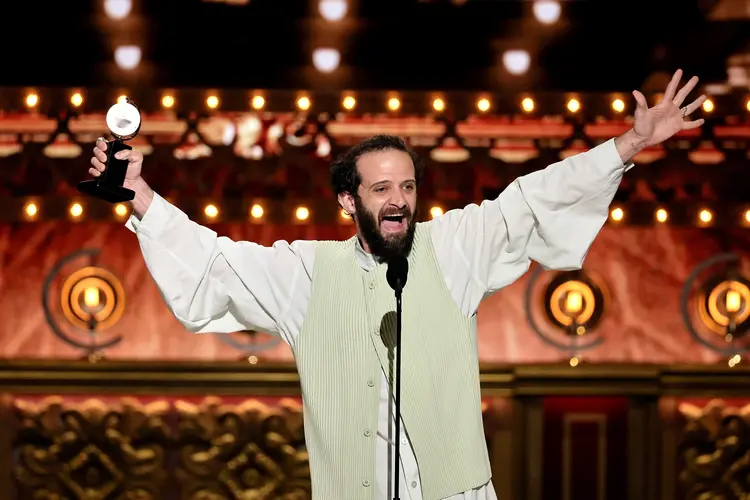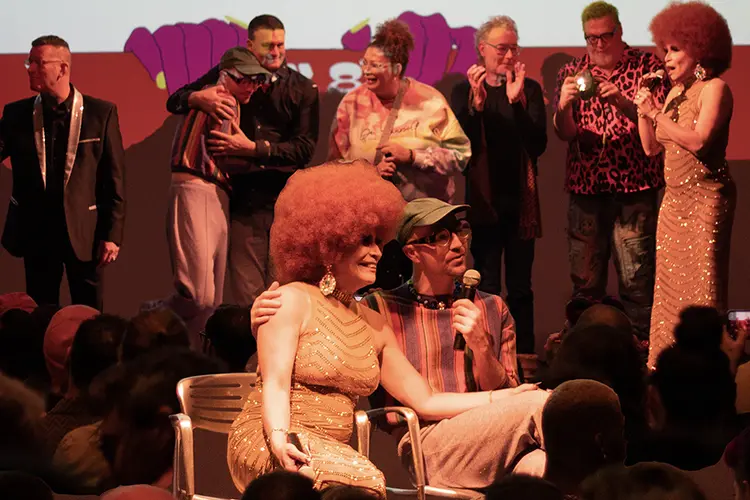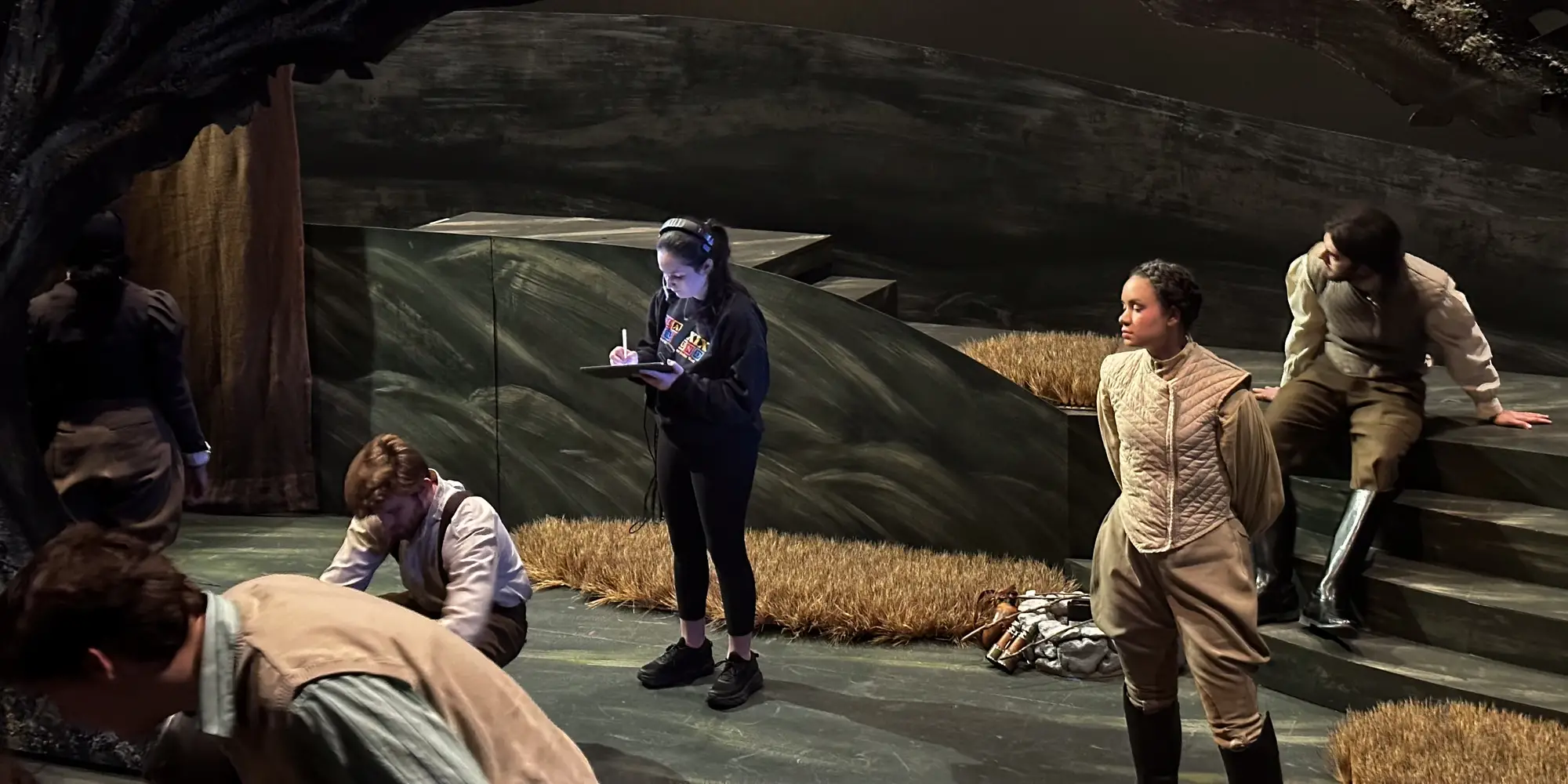
Drama Without Limits: BXA Reflects on Theater’s Value in Interdisciplinary Studies
Media Inquiries
Since its founding, Carnegie Mellon University has served not only as a premier institution of higher learning in engineering and the sciences, but as an environment where community members can collaborate across traditional boundaries.
In 1911, when the plans were first submitted for the building which currently houses the College of Fine Arts(opens in new window), university founder Andrew Carnegie rejected them on the basis of the inclusion of a 420-seat auditorium. His thoughts on the matter were straightforward: “It is not elevating, and a college campus is no place for a theatre.”
Henry Hornbostel, the building’s designer, did not give up on the plan — or the theater. Instead, he rebranded the auditorium and its adjacent spaces as a “Dramatic Laboratory,” resubmitting the plans for Carnegie’s consideration. They were approved soon after, and the groundwork was laid for what is now the nation’s oldest degree-granting drama program.
Much of the mindset that Hornbostel applied while planting the seeds for the college’s construction — ardently pursuing the arts while paying homage to the sciences — is applied by students today. This holds especially true for the BXA Intercollege Degree Programs(opens in new window), which allow undergraduate students to combine an arts curriculum with studies in science, technology, engineering, math (STEM) or the humanities.
“The best work in a discipline happens when you get new questions being asked,” said M. Stephanie Murray(opens in new window), senior associate dean for interdisciplinary initiatives and a teaching professor in BXA. “Interdisciplinary education is a way to make that happen, and to make sure that you have people asking interesting questions from perspectives that hadn't been thought about before.”
Murray said that many students choose drama as part of their degree knowing that their combination of interests may be one of a kind. However, advisers in the program encourage them to embrace this unfamiliarity precisely because it promotes innovative thinking.
“In drama specifically, there's such a tradition of both the establishment and of what avant-garde looks like, that the introduction of technology into those spaces brings the kinds of perspectives and creativity that maybe wouldn't be featured in a more traditional theater program,” she added.
Dramaturgy, neurobiology and the science of storytelling
Madelyn Streisfeld is a sophomore pursuing a bachelor of science and arts in neurobiology(opens in new window) and dramaturgy. Before coming to Carnegie Mellon for her undergraduate studies, Streisfeld found joy in the classroom and as a member of theater organizations like the Lovewell Institute for the Creative Arts(opens in new window), but wasn’t sure how to combine all of her passions at the collegiate level.
“The love of writing and storytelling came first. I had a lot of interest in academics, and my interest in STEM really grew in the classroom, but all of my extracurriculars had to do with performance or being on a stage — things like theater or speech and debate,” she said.
“As I was talking to my parents and my family, nobody could really help me figure out how to bring all of it together in a way that made sense. I immediately found the BXA programs at CMU, and it was one of the first programs that I connected with when I was looking at colleges.”
She said that while people often assume neuroscience means a career in neurosurgery, she is also interested in exploring less conventional paths within the field, including cognitive research on how the mind processes and adapts to experiences — especially theatrical ones. “During the pandemic I stumbled on this concept of story science, which explores how the human brain makes sense of the different art forms and stories that we consume.”
Theater: An Inherently Interdisciplinary Medium
To those who prefer to remain within the structure of a single realm of expertise, such an intense combination of studies may seem unusual. But those familiar with theater might be inclined to say that their field is already interdisciplinary, and the work of BXA’s drama students takes this notion as far as it can go.
“Acting, directing, dramaturgy, lighting, costumes, scenic, sound, media, writing, management — there are representatives from every single one of those areas on any given production, and they all have to bring their skills and collaborate to get a cohesive performance event on stage,” said Wendy Arons(opens in new window), director of the Center for the Arts in Society(opens in new window) and a professor of dramatic literature at CMU.
In her roles, Arons often encounters stories that showcase all aspects of human ingenuity and experience, not just those traditionally associated with dramaturgical storytelling. For instance, several Carnegie Mellon University community members have received awards after competing in the Alfred P. Sloan Script Writing Competition(opens in new window), furthering the public understanding of science and technology with their writing. From the perspective of the humanities, Carnegie Mellon also supports the work of several artists and scholars at risk(opens in new window) who express their stories and experiences through the medium of film.
Angus Fletcher speaks at TEDxCMU.
The discovery helped her understand how all of her interests could be united at Carnegie Mellon. “I thought it was so interesting that there were people in the world who were applying their neuroscience background to understanding stories.
“I realized I'm not only interested in looking at the impact of stories and theater from a societal perspective, but also understanding how the human brain generates stories and how we consume them theatrically,” Streisfeld said. “Then I discovered the dramaturgy program at CMU, which kind of merged different liberal arts areas that I was interested in — English, history and theater — into one program that I felt was applicable to neuroscience.”
Since arriving in the program, Streisfeld has become a member of the speaker curation team for TEDxCMU(opens in new window), helping to bring Angus Fletcher, an expert on story science, to CMU’s campus to discuss imagination, common sense and low-data processes exclusive to animal neurons.
Stage & production management, mathematics and pre-medicine
Liberty Lapayowker is a senior in the Bachelor of Science and Arts program(opens in new window) offered by BXA. While earning her degree, Lapayowker has been able to enroll in courses of study in both mathematical sciences and production technology and management. The BSA program, which combines the strengths of the College of Fine Arts and the Mellon College of Science(opens in new window), has also allowed Lapayowker the opportunity to pursue a third interest: medicine.
“My mom is a physician. I loved seeing how she got to wake up every day and solve a unique problem with a unique person. No day is like the next, and I think that's what I also love about theater and math.”
Lapayowker has been involved in stage management since high school, giving her the opportunity to direct all of the moving parts of a theatrical production. “The stage manager makes sure every element is running smoothly, and more importantly, solves problems when they arise. I knew I wanted that.”
The BXA programs allowed her to continue doing stage production while also exploring the sciences. By taking specific classes, she has crafted a three-in-one curriculum in science, drama and pre-medicine — with time left over to study American Sign Language.
As a volunteer for Lovewell in Eslöv, Sweden, Lapayowker has traveled around the world to assist high schoolers with stage production, with financial assistance from BXA. At the Cook Cardiopulmonary Engineering Lab(opens in new window), she has gained valuable insight into preoperative, postoperative and life-support medicine. And as a talent escort at the Tony Awards, she has taken her skills in stage management all the way to the red carpet, guiding a presenter on and off the stage during the course of the event.
“I see examples every single day of how they complement one another. Math requires logical problem solving, but as you go into higher levels, there are many different ways to solve problems. You have to bring in creativity with concepts like combinatorics and it's not just about logic and proofs anymore.”
Drama in particular has helped facilitate her interests in science and medicine. She studied block and pulley systems as part of a physics course, and found a connection to her ropes class in theater the same day. In another instance, she was able to spend time in the costume department practicing whip stitching by hand, a necessary skill for surgeons. And when studying the wavelengths that correspond to color for a psychology course, Lapayowker was excited to see the same wavelengths printed on the gel lighting filters used to cast color on stage.
She credits her success to the mentorship she received from faculty members at Carnegie Mellon like Gizelle Sherwood, who taught her chemistry remotely while she volunteered for Lovewell in Sweden. “She has always been a huge supporter of me and my interdisciplinary study, believing that my studies in theater give me a unique perspective on peoples' interactions.”
Skills without boundaries: storytelling, management and collaboration
“One of the things that I didn't fully understand about drama until I had been in this position for a while — and this is coming from someone who studied drama — is that the collaborative nature of productions is so important,” Murray said. “Anytime you can manage a whole gaggle of unruly participants into doing the same thing, it is a huge skill. Even just being one of those participants and knowing how to operate as one piece of a larger project is almost never explicitly taught, and it's something so valuable that we get from drama.”
Communicating what a final product will look like, and what steps achieving it might require, is something those in the field may gain experience in through stage work. Even so, it is a skill that Carnegie Mellon’s faculty strive to help students accomplish across all disciplines.
“Something I do with all of my juniors is sit down with them for a 45-minute conversation about what brought them to CMU, what they've accomplished so far, and what they want to do before they leave. That structures their senior year and their senior capstone projects,” Murray said.
While these conversations are important, Murray said, students may not have experience explaining their work or goals to others. This can be especially daunting for those whose ambitions involve distant disciplines.
"Talking about their work does not always come naturally to artists and technically-focused students," she said. "We're giving them the opportunity to practice telling their story, and then using those conversations to help build larger collaborative spaces."
